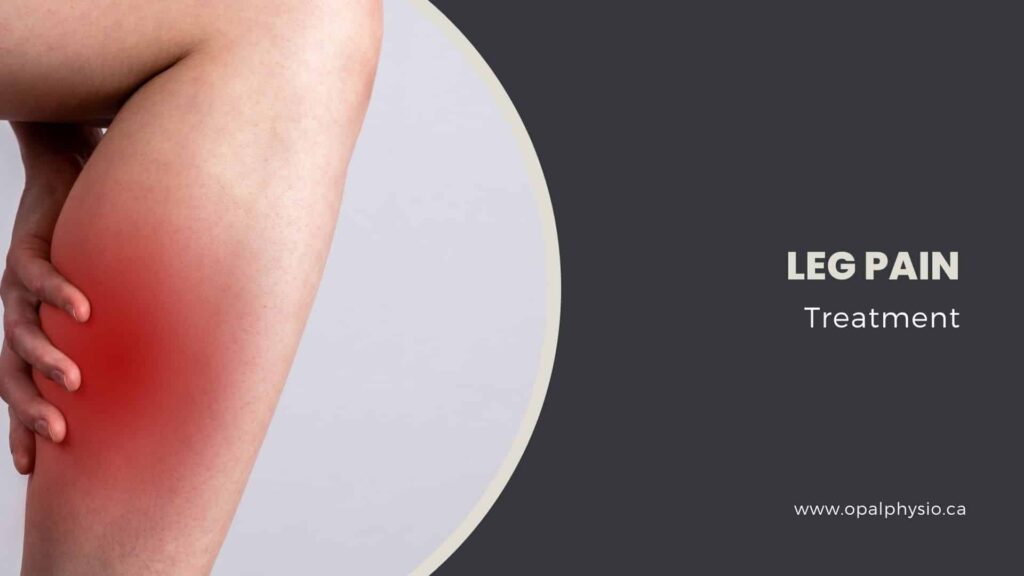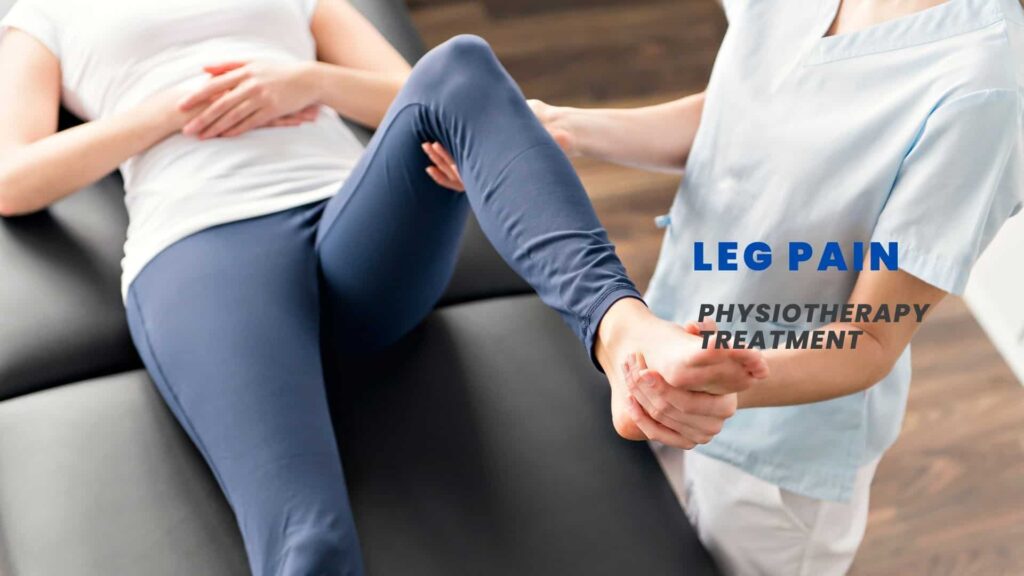Leg Pain Treatment – Physiotherapy
Leg Pain
Leg pain is a common condition that can arise from various causes, ranging from acute injuries to chronic diseases. It can manifest in different ways, such as stabbing, sharp, dull, aching, or tingling sensations.
At Opal Physio Langley, our physiotherapists have experience treating leg pain and can provide high-quality physical therapy services personalized to your needs. We can assist you in resolving your lower extremity pain and help speed up your recovery.

Causes of leg pain
Leg pain can be caused by issues related to the muscles, joints, nerves, or blood vessels.
Symptoms of leg pain
The symptoms of leg pain are varied and depend on the underlying cause. It can be generalized, affecting the entire leg, or localized to a specific site. The pain may also vary in intensity and frequency.
Pain in the lower leg’s tendons, muscles, or joints is more localized and may be categorized as either proximal or distal, depending on where the pain is experienced. Proximal pain in the leg would be felt near or at the hip and knee, and distal leg pain could be felt further down from the knee.
Some common symptoms are:
Types of leg pain:
- Localized pain: Limited to a specific area, often due to injury or strain.
- Radiating pain: Extends from one area to another, such as in sciatica.
- Cramping pain: Involuntary muscle contractions, often associated with dehydration or muscle fatigue.
- Throbbing pain: A pulsating sensation may indicate vascular issues.
When to seek medical attention:
- Sudden and severe pain: Especially if accompanied by swelling or discoloration.
- Persistent pain: Pain that doesn’t improve with rest or over-the-counter medications.
- Signs of infection: Redness, warmth, or fever.
- Numbness or tingling: Especially if it radiates down the leg.
Always consult a healthcare professional for a proper diagnosis and treatment plan appropriate to your condition.
Treatments
Physiotherapy’s role in diagnosing and treating leg pain
Physiotherapy is a critical component in both diagnosing and treating leg pain. It involves a comprehensive approach that starts with a thorough assessment to understand the root cause of the pain. This can include a physical examination and a detailed history taking, where the physiotherapist may ask about the pain’s location, nature, and severity and any factors that alleviate or exacerbate it.
Diagnosing leg pain
Physiotherapists use their expertise to differentiate between various causes of leg pain, including muscle cramps, sprains, nerve issues like sciatica, or vascular problems such as peripheral arterial disease (PAD).
They may inquire about symptoms such as pins and needles, numbness, or weakness and assess how the pain affects daily activities.
If the pain persists or is severe, they might refer the patient to their physician for further diagnostic tests like X-rays or MRI scans.

Physiotherapy treatment for leg pain
Once a diagnosis is made, physiotherapists develop a personalized treatment plan to reduce inflammation, relieve pain, and correct any improper form or muscle imbalances contributing to the pain.
Treatment strategies can include:
The importance of professional guidance
Attempting to self-treat leg pain without professional guidance can sometimes lead to temporary relief but may not address the underlying issue. A licensed physiotherapist can accurately assess the problem and provide a targeted treatment plan for adequate recovery.
Some of the conditions of leg pain are classified based on the areas where it occurs:
Leg Pain FAQ
Find out more about your treatment choices.
Getting a diagnosis of the origin of your pain symptoms is primary in addressing your pain. Your physiotherapist can recommend the best treatment options based on your diagnosis.
At Opal Physio, we provide evidence-based traditional and cutting-edge treatment to help heal your pain and get you back to doing what you love. Request a Consultation now.
